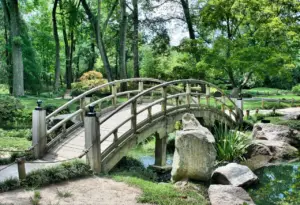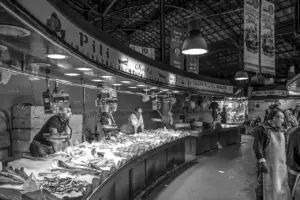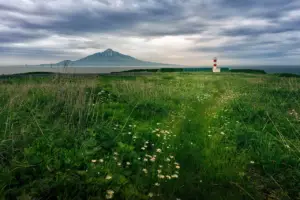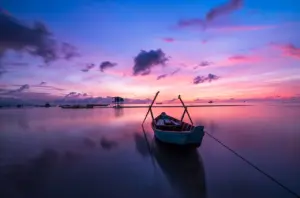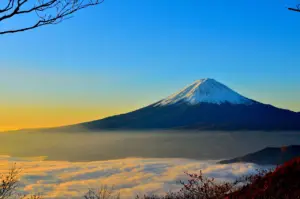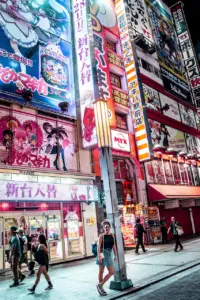Hokkaido, Japan’s northernmost island, is a destination that offers a unique and diverse travel experience. Known for its natural beauty, delicious cuisine, and outdoor activities, Hokkaido attracts visitors from all over the world.
This travel guide aims to provide tips and insights for exploring Hokkaido, from its bustling cities to its serene countryside.
One of Hokkaido’s main attractions is its stunning natural scenery. From the snow-covered peaks of the Daisetsuzan Mountains to the crystal-clear lakes of Shikotsu-Toya National Park, Hokkaido offers a wealth of outdoor adventure opportunities.
Visitors can go hiking, skiing, snowboarding, and even hot air ballooning to experience the island’s natural beauty. Hokkaido’s unique climate also means that visitors can enjoy activities such as lavender fields, ice fishing, and hot springs throughout the year.
With so much to see and do, Hokkaido is a must-visit destination for nature enthusiasts.
Key Takeaways
- Hokkaido offers a unique and diverse travel experience, known for its natural beauty, delicious cuisine, and outdoor activities.
- Engaging in outdoor activities is a must when visiting Hokkaido, with options for hiking, skiing, snowboarding, water sports, and fishing.
- Visitors can explore the various cities and towns in Hokkaido to experience the unique blend of modern and traditional Japanese culture.
- Hokkaido has implemented various sustainable tourism initiatives that aim to promote responsible tourism practices.
Experience the Natural Beauty of Hokkaido
The natural beauty of Hokkaido is a captivating sight, with its vast landscapes of untouched wilderness, pristine lakes, and snow-capped mountains. The island’s unique geographical location in the northernmost region of Japan provides Hokkaido with a distinct climate and landscape that sets it apart from the rest of the country.
The island is home to several national parks, including Shiretoko National Park, which is a UNESCO World Heritage Site that boasts breathtaking scenery, including the Shiretoko Five Lakes and the Shiretoko Peninsula.
Apart from national parks, Hokkaido is also home to several nature reserves, such as the Akan-Mashu National Park and Daisetsuzan National Park, which are ideal for outdoor activities like hiking and camping.
The island is also famous for its hot springs, which are scattered throughout the region, providing a relaxing respite after a day of exploring. Whether it’s hiking through the lush forests or soaking in a natural hot spring, Hokkaido’s natural beauty never fails to impress visitors.
Indulge in Hokkaido’s Culinary Delights
One can experience the diverse and delicious culinary offerings of this region by exploring Hokkaido’s local markets, restaurants, and specialty food shops.
Hokkaido is known for its fresh and high-quality seafood, such as sea urchin, salmon, and squid, which can be found in abundance in the markets. Additionally, the region is also famous for its dairy products, especially cheese and ice cream, owing to the vast dairy farms in the area. Hokkaido’s ramen noodles are also a must-try, with their thick and chewy texture and savory broth.
To fully indulge in Hokkaido’s culinary delights, one can participate in a food tour that takes them through the city’s best food spots. These tours offer a chance to sample a variety of dishes and learn about the history and cultural significance of each meal.
For those interested in cooking, Hokkaido also has many cooking classes, where participants can learn how to make traditional dishes such as sushi, tempura, and miso soup.
With its unique blend of seafood, dairy, and noodle dishes, Hokkaido’s cuisine is a treat for food enthusiasts and travelers alike.
Explore Hokkaido’s Cities and Towns
Exploring the various cities and towns in Hokkaido allows visitors to experience the unique blend of modern and traditional Japanese culture.
One of the most popular cities to visit is Sapporo, which is Hokkaido’s largest city and the host of the annual Sapporo Snow Festival. Visitors can enjoy the city’s vibrant nightlife, numerous shopping districts, and delicious food scene.
Another must-visit destination is Otaru, a picturesque port town that retains much of its historic architecture and charm. Otaru is known for its glassworks, music boxes, and fresh seafood, making it a great place to shop for souvenirs or enjoy a leisurely stroll by the canal.
Beyond these two cities, there are many other towns worth exploring in Hokkaido. For example, Furano is a popular destination for its beautiful lavender fields in the summer and skiing in the winter.
Meanwhile, the quaint town of Asahikawa is home to the Asahiyama Zoo, which is known for its unique enclosures that allow visitors to see the animals up close and personal.
From bustling cities to charming towns, Hokkaido offers a diverse range of experiences for visitors looking to immerse themselves in Japanese culture.
Engage in Outdoor Activities
Engaging in outdoor activities is a must when visiting Hokkaido. With its vast and pristine nature, the island offers a plethora of activities for all seasons.
Hiking trails and nature walks are abundant, leading visitors to breathtaking landscapes, such as the Shikotsu-Toya National Park, while skiing and snowboarding enthusiasts can enjoy world-class slopes in popular resorts like Niseko.
For those who prefer water activities, Hokkaido’s lakes and rivers provide ample opportunities for fishing, rafting, and canoeing.
Hiking Trails and Nature Walks
Hokkaido offers a plethora of hiking trails and nature walks that showcase the natural beauty of this northern region of Japan. From the rugged coastline of Shiretoko National Park to the rolling hills of Furano, there are options for hikers of all skill levels. Here are some of the best hiking trails and nature walks to explore in Hokkaido:
-
Daisetsuzan National Park: Home to Hokkaido’s tallest mountain, Mt. Asahidake, this park offers various hiking trails that lead to volcanic peaks, alpine wetlands, and hot springs.
-
Shiretoko National Park: A UNESCO World Heritage Site, this park boasts stunning coastal landscapes and a diverse range of wildlife, including brown bears and Steller’s sea eagles.
-
Furano: Known for its lavender fields, this area also offers hiking trails that showcase the beauty of Hokkaido’s rolling hills and flower fields.
-
Lake Toya: With its crystal-clear waters and panoramic views of Mt. Yotei, hiking around Lake Toya is a popular activity for visitors to Hokkaido.
With so many options to choose from, hiking and nature walks are a must-do activity for anyone visiting Hokkaido. Make sure to bring appropriate gear and always follow park rules and regulations to ensure a safe and enjoyable experience.
Skiing and Snowboarding
One of the most exhilarating experiences to be had in this northern region of Japan is skiing and snowboarding. Hokkaido is home to some of the best ski resorts in Japan with powdery slopes that attract visitors from around the world. The snow season runs from November to May, ensuring that there is ample time to enjoy the winter sports.
One of the most popular ski resorts in Hokkaido is Niseko, which has gained a reputation for its abundant snowfall and varied terrain. Other notable ski resorts include Kiroro, Rusutsu, and Furano. In addition to skiing and snowboarding, visitors can also enjoy other winter activities such as snowshoeing, ice fishing, and hot springs.
Hokkaido’s winter landscape is truly breathtaking, making it a must-visit destination for anyone seeking an unforgettable winter sports experience.
Water Sports and Fishing
Water sports and fishing are popular activities in the northern region of Japan, providing visitors with a thrilling and immersive experience in the area’s stunning natural environment. Hokkaido, Japan’s northernmost island, is surrounded by the Sea of Japan to the west and the Pacific Ocean to the east, making it a perfect destination for water sports enthusiasts. From surfing and paddleboarding to sea kayaking and rafting, there are endless opportunities to explore the island’s rugged coastline and pristine waters.
For those interested in fishing, Hokkaido is a paradise. The island is home to an abundance of salmon, trout, and other freshwater fish, as well as a variety of saltwater species. Visitors can enjoy fly fishing in the clear mountain streams or join a guided fishing tour on the ocean to catch tuna, cod, and other big game fish. The island also hosts several fishing festivals throughout the year, including the Sapporo Salmon Festival and the Wakkanai Fishing Port Festival, where visitors can sample fresh seafood and learn about Hokkaido’s rich fishing culture.
Experience Hokkaido’s Cultural Offerings
Hokkaido is not just a haven for outdoor enthusiasts, but also a cultural hub that offers a glimpse into Japan’s rich heritage.
Traditional festivals and events are celebrated throughout the year, showcasing the region’s unique customs and traditions.
Museums and art galleries are also abundant, featuring exhibits that highlight Hokkaido’s history, art, and culture.
Additionally, the region boasts numerous onsen hot springs, providing visitors with a chance to immerse themselves in Japan’s age-old bathing culture and relax in natural hot springs.
Traditional Festivals and Events
Various traditional festivals and events showcase the unique culture and traditions of Hokkaido. These celebrations are often influenced by the region’s harsh climate, history, and natural resources. One of the most famous festivals is the Sapporo Snow Festival, held annually in February, where giant ice sculptures are displayed throughout the city. Other popular events include the Yosakoi Soran Festival, a dance competition that originated in Hokkaido, and the Kushiro Crane Festival, which celebrates the migration of cranes and features traditional performances and food.
These festivals and events offer a glimpse into the rich cultural heritage of Hokkaido. They also provide an opportunity for visitors to interact with locals and learn more about the region’s traditions. To further understand the significance of these festivals, a table showcasing some of the most notable celebrations in Hokkaido is presented below. Through this table, visitors can plan their trip to attend festivals that align with their interests and appreciation for Japanese culture.
| Festival/Event | Date | Location |
|---|---|---|
| Sapporo Snow Festival | February | Sapporo |
| Yosakoi Soran Festival | June | Sapporo |
| Furano Lavender Festival | July | Furano |
| Obihiro Buta Festival | August | Obihiro |
| Asahikawa Winter Festival | February | Asahikawa |
| Hokkaido Shrine Festival | June | Sapporo |
Museums and Art Galleries
Museums and art galleries in Hokkaido offer visitors a chance to delve deeper into the region’s history and artistic heritage.
The Hokkaido Museum, located in Sapporo, is a must-visit attraction for those interested in the island’s history.
The museum showcases the development of Hokkaido, from the Ainu people to modern times.
Exhibits include dioramas, artifacts, and interactive displays that provide a comprehensive overview of the island’s culture, industry, and natural environment.
Visitors can also learn about the Ainu, the indigenous people of Hokkaido, and explore their way of life through exhibits that showcase their traditional clothing, tools, and customs.
Another notable museum is the Hokkaido Museum of Modern Art, also located in Sapporo.
The museum displays works by both local and international artists, with a focus on modern and contemporary art.
Exhibitions change regularly, so visitors can expect to see something new with each visit.
The museum’s collection includes paintings, sculptures, and installations, making it a great destination for art lovers.
The museum also hosts workshops and events for children and adults, making it a great destination for families.
Overall, museums and art galleries in Hokkaido offer a unique opportunity to learn about the region’s history and artistic heritage.
Onsen Hot Springs
Immerse yourself in the therapeutic and relaxing experience of natural hot springs at the Onsen resorts scattered throughout Hokkaido. These hot springs are an integral part of Japanese culture and are known for their healing properties.
The Onsen resorts provide visitors with an opportunity to rejuvenate, relax, and enjoy the serene surroundings of the northern island. The Onsen hot springs are typically located in rural areas surrounded by breathtaking natural landscapes.
There are various types of Onsen resorts, from modern spas to traditional Japanese-style baths. The water in these hot springs is rich in minerals, such as sulfur, which is believed to have healing properties for various ailments.
Visitors can enjoy a variety of baths, such as indoor and outdoor baths, and even private baths. The Onsen hot springs are an excellent way to immerse yourself in Japanese culture while enjoying the therapeutic benefits of natural hot springs.
Plan Your Hokkaido Itinerary
To effectively explore Hokkaido, it is essential to plan your itinerary in advance. Hokkaido is known for its vast and varied terrain, from the snow-capped peaks of the Daisetsuzan mountain range to the coastal plains surrounding the Sea of Japan. With so much to see and do, it can be overwhelming to decide where to begin.
When planning your itinerary, it’s important to consider factors such as weather, transportation, and the specific interests of your group. Hokkaido experiences cold, snowy winters and mild summers, so the time of year you visit will greatly impact your itinerary. Additionally, Hokkaido is a large island, so transportation between destinations can take longer than expected. Finally, consider the interests of your group – are you interested in outdoor activities like skiing and hiking, or are you more interested in cultural experiences like visiting museums and temples? By taking these factors into account, you can create an itinerary that maximizes your time and ensures a memorable trip.
| Destination | Description | Recommended Length of Stay |
|---|---|---|
| Sapporo | Hokkaido’s largest city, known for its festivals and food | 2-3 days |
| Otaru | Picturesque port town with a rich history | 1-2 days |
| Furano | Scenic town surrounded by rolling hills and lavender fields | 1-2 days |
| Shiretoko National Park | UNESCO World Heritage Site with stunning wildlife and landscapes | 2-3 days |
| Noboribetsu | Hot springs resort town known for its healing waters | 1-2 days |
By incorporating these destinations into your itinerary, you can experience the varied beauty and culture of Hokkaido. However, it’s important to keep in mind that Hokkaido has much more to offer than just these destinations – be sure to do your own research and include any other locations that pique your interest. With careful planning and a willingness to explore, your Hokkaido trip is sure to be an unforgettable adventure.
Travel Tips for Hokkaido
One way to enhance your experience when visiting Hokkaido is by following some recommended travel tips.
Firstly, it is important to prepare for the weather conditions. Hokkaido experiences long and harsh winters, with heavy snowfall and temperatures dropping below freezing. Visitors should bring warm clothing, including thermal underwear, gloves, hats, and sturdy boots. It is also advisable to carry a portable hand warmer and to purchase a heat pad for the feet, which can be found in many convenience stores throughout Hokkaido.
Secondly, it is recommended to rent a car to explore the region. Hokkaido is a vast and sparsely populated area, and public transportation options are limited outside of major cities. By renting a car, visitors can easily access the many scenic spots and natural attractions that Hokkaido has to offer. Additionally, driving in Hokkaido is relatively easy, with well-maintained roads and minimal traffic. However, it is important to be aware of potential hazards, such as icy roads, and to drive cautiously in adverse weather conditions.
Hokkaido’s Future and Sustainability
The sustainability of tourism in Hokkaido has become an increasingly important concern for the region’s future development. As tourism continues to grow in popularity, there is a growing need to find a balance between attracting visitors and preserving the natural environment and cultural heritage of the region.
To address this issue, Hokkaido has implemented various sustainable tourism initiatives that aim to promote responsible tourism practices. One of the key initiatives is the promotion of eco-tourism in the region. This involves encouraging visitors to engage in environmentally friendly activities such as hiking, bird watching, and wildlife conservation.
Another initiative is the development of sustainable tourism infrastructure that reduces the impact of tourism on the environment. This includes the use of renewable energy sources and the implementation of waste reduction and recycling programs. Additionally, Hokkaido has also established partnerships with local communities to promote cultural tourism and preserve the region’s cultural heritage.
Finally, the region is also working towards promoting tourism in the off-season to reduce overcrowding and promote sustainable tourism practices. These initiatives are crucial in ensuring the long-term sustainability and development of tourism in Hokkaido.
Frequently Asked Questions
What is the best time of year to visit Hokkaido?
The best time of year to visit Hokkaido is largely dependent on one’s personal interests and preferences.
Those interested in winter sports such as skiing and snowboarding would enjoy visiting between December and March when the island is blanketed in snow.
For those interested in flower viewing, the summer months of July and August are ideal when the lavender fields are in full bloom.
Autumn, from September to November, is a popular time to visit as the leaves change color and the weather is mild.
However, it is important to note that Hokkaido’s climate is unpredictable and can vary greatly from year to year, so it is advisable to check weather forecasts and plan accordingly.
How do I get around Hokkaido without a car?
To get around Hokkaido without a car, travelers have several options. The most convenient mode of transport is the train, which covers most of the island and provides comfortable and efficient service. Hokkaido has an extensive rail network, including express trains, local trains, and limited express trains. Visitors can purchase a Japan Rail Pass, which allows unlimited travel on JR trains across the country, and is valid for seven, 14, or 21 days.
Additionally, Hokkaido has an extensive bus network, with regular services linking most towns and cities. Buses are a good option for sightseeing and exploring remote areas, but can be slower than trains.
Finally, taxis and rental bicycles are available in most cities and towns, providing additional options for getting around. Overall, visitors to Hokkaido can easily explore the island without a car, thanks to the availability of reliable and convenient public transport options.
Are there any traditional festivals or events that take place in Hokkaido?
Hokkaido, Japan’s northernmost island, is known for its rich cultural traditions and festivals.
One of the most famous events is the Sapporo Snow Festival, which takes place every February and features stunning ice sculptures and snow statues.
Another popular festival is the Yosakoi Soran Festival, which celebrates traditional Japanese dance and music.
Hokkaido also hosts many summer festivals, such as the Furano Lavender Festival and the Obihiro Ice Cream Festival.
In addition to these large-scale events, there are also smaller, local festivals that highlight the unique customs and traditions of Hokkaido’s various regions.
These festivals offer visitors a chance to experience the rich culture and history of this unique northern gem.
What are some lesser-known attractions in Hokkaido that are worth visiting?
Hokkaido, Japan’s northernmost island, boasts a plethora of natural wonders and cultural attractions worth exploring.
Among the lesser-known attractions in Hokkaido, the Shiretoko Peninsula stands out as a UNESCO World Heritage site renowned for its pristine wilderness and abundant wildlife. The peninsula’s rugged coastline, towering cliffs, and dense forests offer a stunning backdrop for outdoor activities such as hiking, kayaking, and wildlife watching.
Another hidden gem is the Asahikawa Winter Festival, a celebration of snow and ice sculptures that attracts thousands of visitors in February. The festival also features live music, food stalls, and traditional Japanese performances.
For those interested in history and art, the Hokkaido Museum of Modern Art in Sapporo showcases a wide range of works by Hokkaido artists, as well as collections of Japanese and Western art.
Overall, Hokkaido’s lesser-known attractions offer a unique and enriching experience for travelers looking to discover Japan’s diverse and fascinating culture.
What is the current state of Hokkaido’s wildlife and conservation efforts?
The current state of Hokkaido’s wildlife and conservation efforts is a complex issue that involves both successes and challenges.
Hokkaido is home to a diverse range of flora and fauna, including several endangered species such as the red-crowned crane and Blakiston’s fish owl.
The Japanese government and various organizations have implemented several conservation efforts to protect these species, such as habitat restoration and captive breeding programs.
However, there are also threats to the region’s wildlife, including deforestation, hunting, and climate change.
Additionally, there is ongoing debate about the balance between conservation efforts and economic development, particularly in the tourism industry.
Overall, while progress has been made in protecting Hokkaido’s wildlife, there is still much work to be done to ensure the region’s biodiversity for future generations.
Conclusion
Hokkaido, Japan’s northernmost island, is a natural wonderland that boasts stunning landscapes, unique culinary delights, and a rich cultural heritage.
Visitors can indulge in the region’s natural beauty by exploring its national parks, hot springs, and ski resorts.
Hokkaido’s cities and towns offer a glimpse into both modern and traditional Japanese culture.
Outdoor enthusiasts can enjoy a range of activities, from hiking and skiing to kayaking and fishing.
Hokkaido’s cultural offerings are equally impressive, with traditional festivals, museums, and art galleries.
When planning a trip to Hokkaido, visitors should take into account the island’s unique weather patterns, which can vary greatly depending on the season.
It is also important to research transportation options and accommodations in advance, as some areas may be more difficult to access than others.
Sustainable tourism practices are becoming increasingly important in Hokkaido, with efforts being made to promote eco-friendly tourism initiatives.
Overall, Hokkaido is a must-visit destination for anyone seeking an authentic and immersive Japanese experience.
Its natural beauty, culinary delights, cultural offerings, and outdoor activities make it a truly unique destination.
With careful planning and a commitment to sustainable tourism practices, visitors can enjoy all that Hokkaido has to offer while ensuring the preservation of this special place for generations to come.











